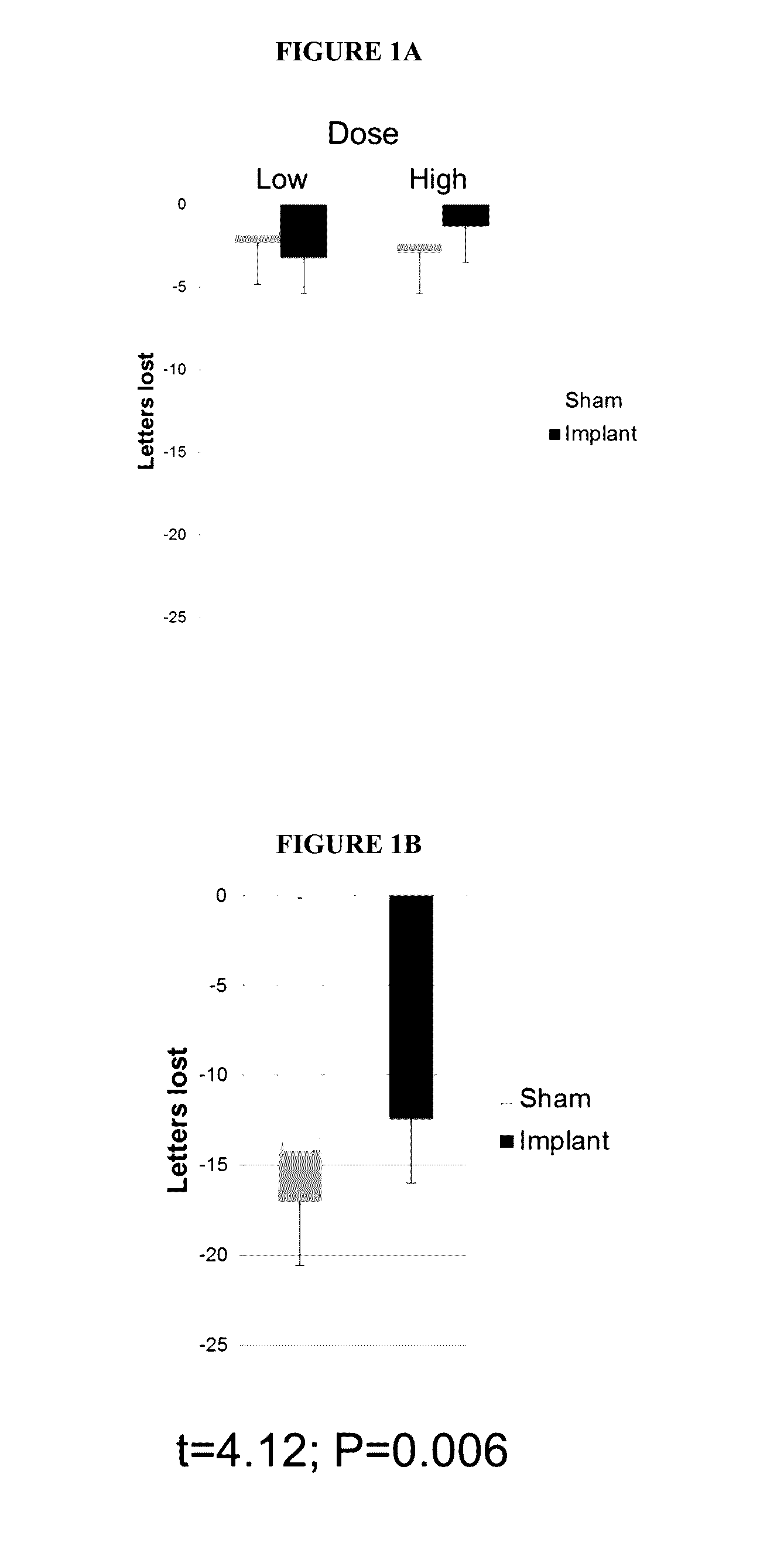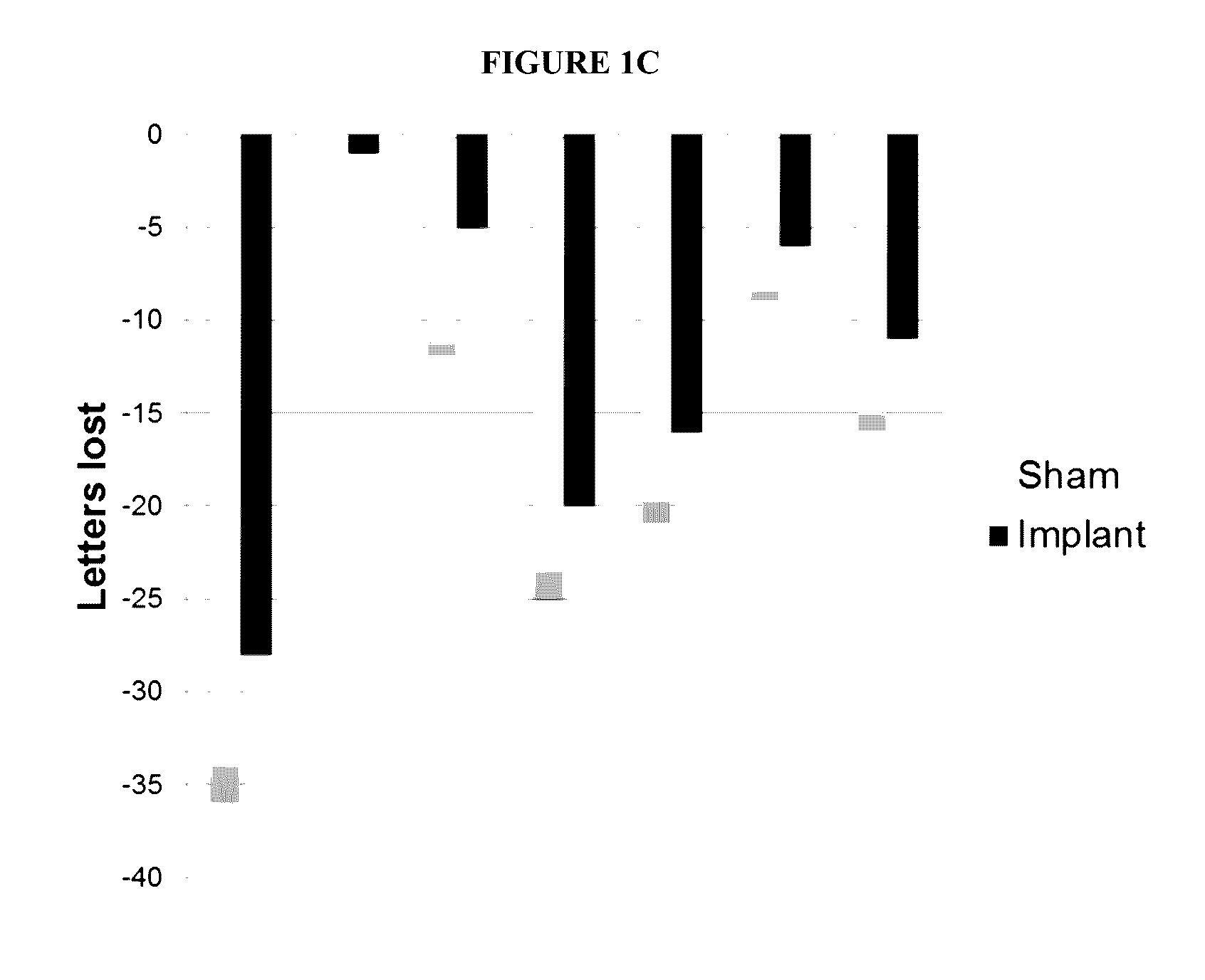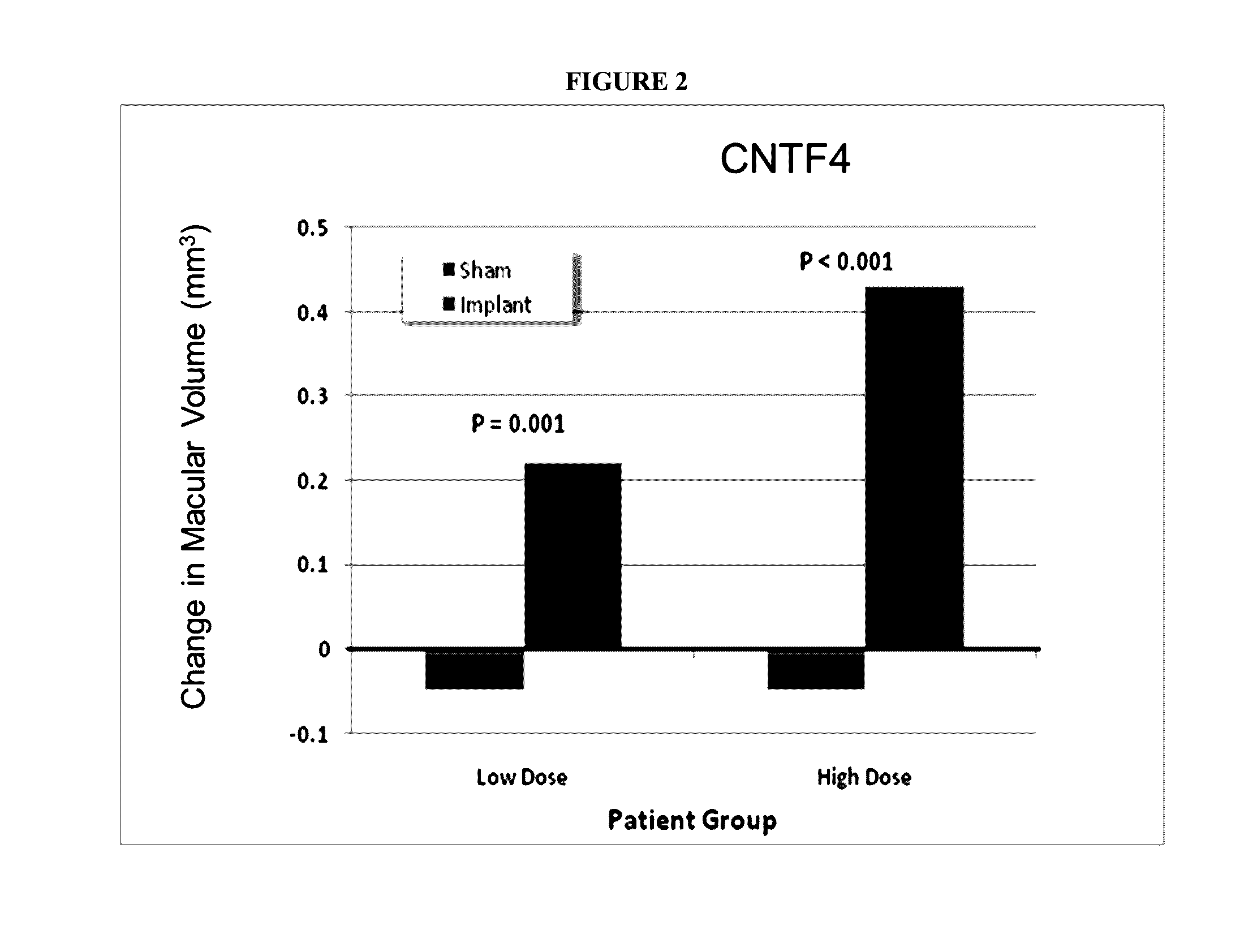Use of Encapsulated Cell Therapy for Treatment of Ophthalmic Disorders
a technology of ophthalmic disorders and encapsulated cells, which is applied in the field of encapsulated cell therapy, can solve the problems of limited application, loss of transplant function, eventual necrosis of transplanted tissue or cells, and the need for transplant to remain functional for a long time, so as to preserve or improve the thickness of the outer retinal layer, improve the acuity of the visual field, and improve the regeneration of optic nerves.
- Summary
- Abstract
- Description
- Claims
- Application Information
AI Technical Summary
Benefits of technology
Problems solved by technology
Method used
Image
Examples
example 1
Retinitis Pigmentosa Clinical Trial
Patient Profile and Study Design
[0207]Retinitis pigmentosa (RP) patients were recruited to participate in a clinical study in which they would receive a sustained-release, CNTF-secreting ophthalmic ECT device. The study was randomized, double masked, sham-controlled, and performed in multiple research centers (11 participating sites). The RP patients were divided into two study groups: CNTF3 and CNTF4.
[0208]The participants in the CNTF3 study group (65 patients) received a one year implant of the CNTF-secreting ECT device. RP patients who were included in the CNTF3 study group were divided into those that received a low-dose (5±0.8 ng / day at implant) CNTF-secreting ECT device (N=22), those that received a high-dose (20±3.0 ng / day at implant) CNTF-secreting ECT device (N=43), and those that received a fellow eye sham suture (N=63). The participants in the CNTF3 study had a best corrected visual acuity (BCVA) of 20 / 63 to 20 / 320 prior to receiving the...
example 2
Patient Profile and Study Design
[0222]Glaucoma patients were recruited for a clinical trial in which the participants would receive a high dose CNTF-secreting device (20±3.0 ng / day). Inclusion and exclusion criteria for candidate participants are shown in Table 2. Importantly, in order to qualify as a study participant, candidates had to have: 1) clinical evidence of progressive retinal ganglion (RG) cell dysfunction and degeneration using both visual field and at least one structural modality; 2) residual visual field preservation, including best corrected visual acuity (BCVA); and 3) failure to contain glaucomatous progression with maximally tolerated reduction of intraocular pressure (TOP), or visual field defect affecting fixation, or subjective visual field loss affecting activities of daily living.
TABLE 2Inclusion / Exclusion Criteria for the Glaucoma StudyINCLUSION CRITERIAEXCLUSION CRITERIAmust understand and sign the informedother corneal, lens, optic n...
example 3
Geographic Atrophy Trial
Patient Profile and Study Design
[0231]Geographic atrophy (Dry Age Related Macular Degeneration (AMD)) patients were recruited for this clinical trial in which the participants would receive a CNTF-secreting intraocular ECT device. The study was designed to be randomized, double-masked, sham controlled and performed in multiple research centers in the U.S. The study design included geographic atrophy patients that would either receive a low dose CNTF-secreting device, a high-dose CNTF-secreting device, or a sham treatment in a fellow eye. A total of 51 subjects were recruited for the study: 27 received the high dose device, 12 received the low dose device, and 12 received the sham treatment.
[0232]The primary outcome assessment was study participant best corrected visual acuity at 12 months post implant. Additional assessments performed included a safety assessment of study participants. The study was designed to last one year.
Sustained Release CNTF-Secreting D...
PUM
| Property | Measurement | Unit |
|---|---|---|
| Fraction | aaaaa | aaaaa |
| Time | aaaaa | aaaaa |
| Time | aaaaa | aaaaa |
Abstract
Description
Claims
Application Information
 Login to View More
Login to View More - R&D
- Intellectual Property
- Life Sciences
- Materials
- Tech Scout
- Unparalleled Data Quality
- Higher Quality Content
- 60% Fewer Hallucinations
Browse by: Latest US Patents, China's latest patents, Technical Efficacy Thesaurus, Application Domain, Technology Topic, Popular Technical Reports.
© 2025 PatSnap. All rights reserved.Legal|Privacy policy|Modern Slavery Act Transparency Statement|Sitemap|About US| Contact US: help@patsnap.com



